Ni no Kuni -Wrath of the White Witch- Original Soundtrack
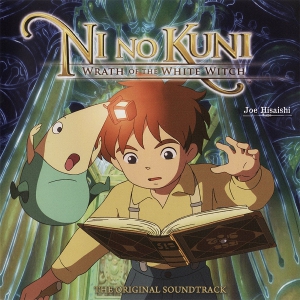 |
Album Title: Ni no Kuni -Wrath of the White Witch- Original Soundtrack |
| Record Label: Wayô Records |
|
| Catalog No.: WAYO-003/4 |
|
| Release Date: March 29, 2013 |
|
| Purchase: Buy at Official Site |
Overview
Ni no Kuni, a game co-developed by Studio Ghibli and Level 5, is a fantastic addition to the gaming world, especially during a shift of console generation and a subsequent rush for cutting edge graphics. With simultaneously simple and complex mechanics, storyline, and emotional threads, Ni no Kuni reminds us of the role of art in video games, both in the physical appearance of the game and thoughts left with the player after it’s all over. The game begins when Oliver, a young boy with a fascination for all things mechanical, is rescued from an accidental death by his mother, who subsequently dies from a heart condition. Oliver is then transported to an enchanted world with his companion, a doll-turned-fairy, to defeat the dark wizard Shadar. A Ghibli piece through-and-through, Ni no Kuni deserves its reputation as one of the most highly rated games on the Nintendo DS and Sony’s PlayStation 3.
Like any Ghibli work, Ni no Kuni comes with Joe Hisaishi’s magical touch. Whereas composer Rei Kondoh created the background music for the score, Hisaishi was responsible for the cinematic score for Ni no Kuni, performed by the Tokyo Philharmonic Orchestra. Two soundtracks were released after the game: a Japanese one disc release featuring a set of music from the DS version of a the game, and a Western two-disc set that included both this score and the additional music from the PS3 game. For any soundtrack aficionados out there, I highly recommend getting the full two disc version of the score (personally, I am almost always a fan of the extended score to anything, and this score is worth it). I’d especially recommend the release if you only own the DS version of the game; even though Level 5 made some changes to the game card to accommodate for such an intricate score, the complexity of an entire symphonic ensemble is just not meant for the speaker of a DS.
Body
The first disc of this album is identical in content to the previously-released soundtrack for the DS version of the game. In contrast, the second disc of the soundtrack comes with a second disc with tracks not included in the DS version of the game. The two disc set begins with the “Main Theme,” an overture-like piece that introduces one of the several themes of the game. One of Hisaishi’s talents in composition is creating worlds with his music — weaving together multiple themes that each represent different aspects of the universe he is writing for. These themes are different, each unique, with a few variations throughout the soundtrack. “Drippy” and “Mummy’s Tummy,” for example, both feature a light, mischievous theme for Oliver’s fairy king sidekick on the oboe. The latter is an exclusive to the two disc set and adds to the thematic cohesion of the score.
The track I first heard from this game, “World Map,” is my favorite. It’s what Joe Hisaishi does best: creating an iconic theme that people remember long after it’s over. The piece begins with a brassy fanfare of an introduction and crescendos until it suddenly ends with the melody, played on a soft, single piccolo. One other track I have to mention from the first disc is “In Loving Memory of Allie,” a piece for the death of Oliver’s mother. This is the kind of music I want to see more frequently in video game soundtracks: rich strings and emotion, and a rippling ebb-and-flow sequence, thoughtfully composed and performed; it’s a piece reminiscent of Hisaishi’s “The Sixth Station” from Spirited Away. “World Map” may be my favorite piece, but “In Loving Memory,” for me, seals the soundtrack as being one of Hisaishi’s best.
Hisaishi’s soundtrack is varied, well-performed, and written by a renowned composer who knows how to transcribe emotion into music. My only major qualm with the score is not in the quality of music, but in the nature of its integration of music. This Hisaishi’s first video game work, and video games doesn’t always go the same as movies. Whereas battle music in a movie is supposed to engage the viewer more wholly in the scene, battle music in a game is supposed to encourage the player to continue fighting, from the beginning to the end. Ni No Kuni‘s battle themes are cinematically engaging and exciting, but listening to them for the fifth, twentieth, or hundredth time in a row gets a little frustrating. The track “Battle” has a twenty second introduction, and after a certain number of fifteen-second battles, it becomes gratingly annoying. It’s not a bad piece, but neither is it a piece meant to be listened to more than once or twice, and it is played far, far more than that. For better or worse, the two disc set also features a more accelerated variation of the theme.
Among the exclusives to the two disc set, “The Horror of Manna” was one new track that had a different feel than the rest of the soundtrack; it opens with a downright creepy melody on the bass later accompanied by wind instruments playing harsh, dissonant accompanying chords. The piece is a good one; while perhaps not one I would choose to listen to outside of the game, it is a hair-raising piece that fits well in a soundtrack filled with beautiful motifs and melodies. It reminds us that the game, while certainly more cartoonish in appearance than others, is true to the Miyazaki tradition of incorporating heavier and more universal themes for all ages. Indeed, the following track, “Unrest”, stylistically similar to Horrors, actually utilizes what sounds like a human sigh in its unsettling mix of sounds and half-melodies.
One of the highlights of the second disc is the two White Witch themes included. “The Final Battle Against the White Witch” which opens with a flurry of angry chords and a staccato string pattern met with descending brass, finally falling into a strange, ethereal marsh of vocals, strings, and xylophone. Hisaishi doesn’t often incorporate choral parts in his soundtracks, but he does it very well in this battle theme. The track picks up speed again and ends with a crazy waltz that perfectly fits the setting of the game: it’s captivating, animated, emotional, and also just plain fun. The subsequent piece is “Wrath of the White Witch” — any time I see a track with the same title as the game it’s a part of, I have high expectations. The crazy waltz returns for this piece, and it plays out in an almost reverse fashion from the preceding piece. The waltz subsides into a delicate, haunting flute and xylophone duet which then fades into a melody that would be almost sweet if not for the accompanying eerie harmonies. The piece ends with a wild flurry of chords and a final return of the waltz. This was a rather fun piece I missed on the DS version of the soundtrack.
The melody from “World Map” is heard again in the final song of the game. The two disc set actually both an English and a Japanese version of this song, with one version ending each disc, sung by Mai Fujisawa in the Japanese version (“Kokoro no Kakera”) and Archie Buchanan in the English version (“Pieces of a Broken Heart”). With the exception of language, the two versions are essentially identical, in both instrumentation and style. I’ve often felt slightly uncomfortable with songs like this at the end of a game or movie, particularly fantasy-based; I sometimes see them as breaking character with a purely instrumental score, especially when the song nears the pop genre (as it seems to frequently do). This one works, though; whether it’s the striking melody, the excellent singers, or the instrumental arrangement, the song does not break with the spirit of the game.
Summary
The score has playful themes, sorrowful themes, and epic themes, expertly weaved into a single great work. If more video game composers used the standard set by Hisaishi, I think the future of video game music would be very bright. The fact that some of the tracks reflect more of a cinematic purpose than a gaming purpose should not deter those on the fence about buying the soundtrack; after all, listening to the battle music only once is easy when listening to the soundtrack linearly, straight through. That said, those looking for Rei Kondoh’s background music for the game won’t find it in this set, which was clearly designed more with Joe Hisaishi’s fans in mind. Despite not incomplete as a result, this two disc set is nevertheless wonderfully presented by Wayô Records and does Hisaishi’s score justice. It can be ordered exclusive through the Western label’s official website.
Do you agree with the review and score? Let us know in the comments below!
4.5
Posted on August 6, 2014 by Emily McMillan. Last modified on August 6, 2014.

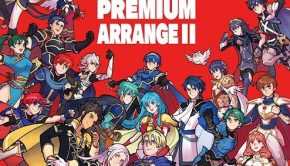
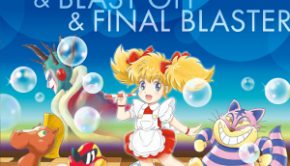
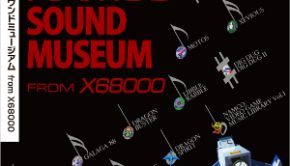
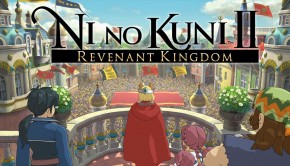










Nice review Emily!
One of the finest scores I’ve heard. So glad it got a fairly extensive release. Great review!
Great review. I loved the NNK score too. The moment I heard Drippy’s theme on the startup screen, I thought “Oh yeah, this is gonna be good.” It’s so catchy. I’m also a fan of “One Fine Morning” and the Ding Dong Dell theme.